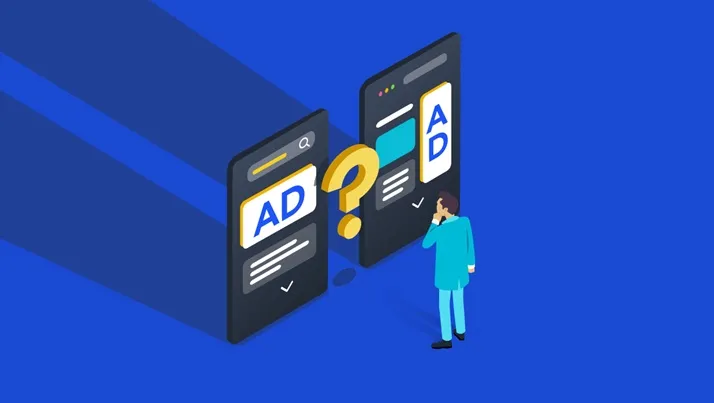


Technology




In digital marketing, understanding the differences between paid search ads and display ads—and knowing when to use each—can significantly impact a brand’s reach, visibility, and conversion rates. Both ad types offer unique benefits, making them effective in different contexts. This article will examine paid search ads and display ads, comparing their strengths, use cases, and strategies for maximizing performance within digital advertising campaigns.
What Are Paid Search Ads?
Paid Search Ads appear at the top of search engine results pages (SERPs) when users enter specific keywords or phrases. These ads typically display as text-based results and are triggered by user queries, meaning they appear to people actively searching for related products or services.
Advantages of Paid Search Ads:
What Are Display Ads?
Display Ads use visual elements, such as banners, images, and interactive graphics, and are shown across websites, social media platforms, and apps. These ads do not rely on search intent; instead, they are placed in front of users based on targeting factors like demographics, online behaviors, and browsing history.
Advantages of Display Ads:
Key Differences Between Paid Search and Display Ads
Aspect | Paid Search Ads | Display Ads |
Intent | High intent, targeting users actively searching | Lower intent, targeting based on demographics or behavior |
Format | Text-based ads in SERPs | Visual ads on websites, apps, and social media |
Targeting | Keyword-driven | Demographic, interest-based, and remarketing |
Audience Reach | Limited to users performing searches | Wider reach across the web and social media |
Cost Structure | Pay-per-click (PPC) | Cost-per-impression (CPM) or PPC |
When to Use Paid Search Ads
1. Targeting High-Intent Customers
Paid search ads are best for targeting users with a clear purchase or solution-seeking intent. Since these ads appear in response to specific keywords, they are highly effective for reaching people who are actively searching for relevant products or services. For instance, an e-commerce store might use search ads for product-specific keywords like “buy running shoes online” to capture users ready to make a purchase.
2. Driving Immediate Conversions
Because paid search captures users at the point of active search, it’s a great strategy for campaigns focused on direct conversions, such as online purchases, form submissions, or bookings. These ads work particularly well for short-term campaigns or seasonal promotions that aim for immediate results.
3. B2B and Service-Based Industries
Paid search is also effective for B2B and service industries, where potential clients often conduct thorough research. For example, a business consulting firm might use paid search ads targeting keywords like “business consulting services” or “financial consulting” to attract clients who are in the decision-making phase.
When to Use Display Ads
1. Brand Awareness and Reach Expansion
Display ads are excellent for reaching a broader audience and increasing brand awareness. They can help introduce your brand to users who may not be actively searching but are likely to resonate with your offerings based on their demographic or behavioral profiles. This is particularly beneficial for new products or services that need exposure.
2. Retargeting Potential Customers
Display ads are ideal for retargeting, where you can reconnect with users who have visited your website but did not convert. For instance, a clothing brand might use display ads to retarget users who browsed specific products but didn’t complete a purchase, keeping the brand top of mind and encouraging return visits.
3. Engaging Audiences on Visual Platforms
Display ads are particularly effective for visually-driven industries like fashion, travel, or lifestyle, where captivating visuals can enhance the appeal of the offering. Brands in these industries can use display ads to showcase products with high-quality images and video, making them ideal for campaigns on platforms like YouTube, social media sites, and lifestyle blogs.
ROI Trends and Cost Efficiency in Paid Search vs. Display Ads
Paid Search ROI
Paid search ads typically yield a higher ROI for conversion-focused campaigns due to their high intent. Users who click on search ads are often further down the sales funnel, which results in more immediate conversions. That said, the cost-per-click (CPC) can vary significantly depending on keyword competitiveness, industry, and target location. Generally, the precision targeting of search ads makes them cost-efficient when the goal is direct sales, lead generation, or other measurable actions.
Display Ads ROI
Display ads, while often yielding a lower click-through rate (CTR) than search ads, can offer a high return for campaigns centered on brand visibility and engagement. When managed effectively, display ad campaigns can achieve a low cost-per-thousand impressions (CPM), providing broad reach at a lower cost. Additionally, display ads shine in retargeting campaigns, where conversion rates tend to increase as these ads remind past visitors about products or services they’ve previously viewed.
Choosing Between Paid Search and Display Ads
Goal | Recommended Ad Type | Example |
Immediate Conversions | Paid Search Ads | E-commerce products, lead generation |
Brand Awareness | Display Ads | New product launches, brand introductions |
Retargeting | Display Ads | Re-engaging users who left the site without converting |
High-Intent Traffic | Paid Search Ads | B2B services, service-based industries |
Visual Engagement | Display Ads | Fashion, travel, lifestyle industries |
Maximizing Impact: Combining Paid Search and Display Ads
In many cases, combining paid search and display ads can maximize impact and reach. For example, a brand might use paid search ads to capture high-intent traffic and drive immediate conversions, while simultaneously running display ads to increase brand awareness and retarget users who have visited their website.
Conclusion
Both paid search and display ads are essential tools in digital advertising, each offering unique benefits that cater to different goals. Paid search is ideal for reaching high-intent users ready to take action, while display ads are invaluable for building brand awareness, engagement, and retargeting. By understanding the strengths of each ad type and aligning them with specific campaign objectives, businesses can achieve a well-rounded advertising strategy that optimizes reach, engagement, and conversions.